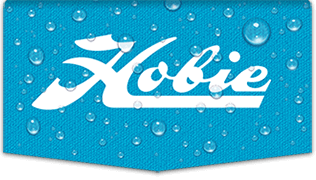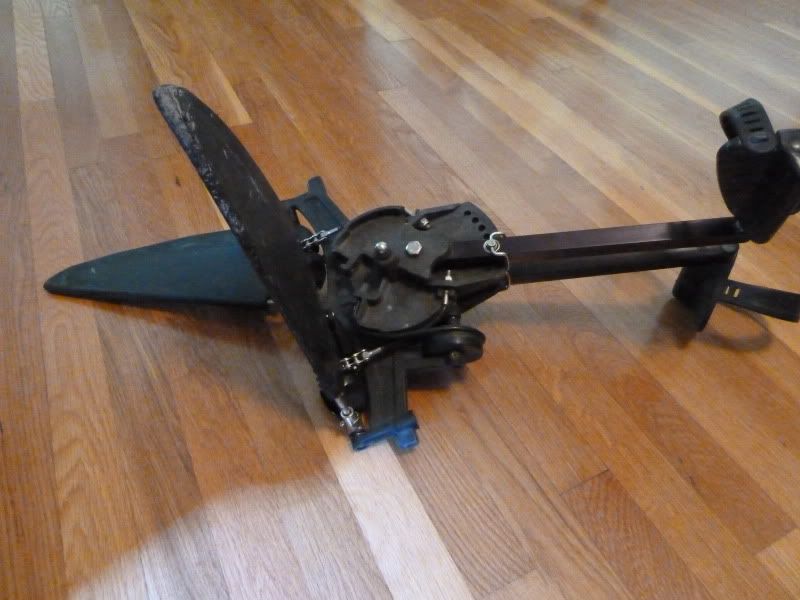If the sprockets are stainless steel then, as others have already said, the chains do have more of a tendency to jump over the teeth which is what appears to have happened to your drive.
They key is correct tension in the drive cables - in my experience it is important not to overlook the "idler cable"; this is the one that goes over the wheel at the front of the drive. On these stainless sprocket drives if there is not sufficient tension in the idler cable (as well as in the chain cables) then there will be a pronounced tendency to skip a tooth if pedalled too forcefully. In this event the front chain cable is the most likely to jump a tooth so pay more attention to getting the idler chain and front chain tension right & you should be fine.
Apparently the reason for the skipping is that rapid pedalling creates some whiplash in the chain which lifts the chain over a tooth. If you look at the middle tooth of the plastic toothed sprockets you will see that the tooth has a "crown" on it - I believe that Hobie might have found it too tricky to cost effectively create this crown shape in stainless but was able to mould it in plastic... but that is only me guessing. Anyway, the plastic toothed sprockets have a far lower tendency to skip.
Now a shameless plug for stainless sprockets:
Do not be put off your stainless sprockets though: they work perfectly well if the cables are correctly tensioned - I have a stainless drive with many years of hard use on it and it is still going strong and perfectly OK.
There is more sloppiness of the masts in a stainless drive but that does not seem to materially affect performance.
And (BTW) it is possible to skip-back a tooth by pedalling hard on the opposite stroke to the stroke that caused the skip - I managed this one one occasion before I sorted out the need for idler chain tension.
But the big advantage (in my opinion) of the stainless drives is easy maintenance:
If for whatever reason the pin falls out or wears through (it can happen) and the mast falls out, it is cheap, quick & easy to replace, or "bodge". I now carry a spare pin or 2 after I had to bodge a lost pin with a fishhook once as a get-me-home repair.
The masts can be quickly and easily swapped out at sea in the event that a mast breaks or gets bent - this is not the case for the other drives which use a threaded screw or threaded shaft to secure the mast in the drive rather than the very simple split pin of the stainless drives. If the fin-mast snaps or bends on a stainless drive, remove the split pin and the mast or the stub just drops out: try getting a broken mast-stub out of one of the other drives at sea (well-nigh impossible) and you will begin to appreciate the simplicity of the split pin approach!
Please note though, that broken fin-masts are only likely to be an issue if you pedal long and hard after upgrading to the ST Turbo fins which use longer masts which are therefore more prone to fatiguing and snapping off; if you stay using the "normal" fins (as shown in your photo) or the ST ones (both go on the standard-length masts) then you are not likely to experience many/any fin-mast breakages unless you bash your drive or fins into hard objects or beaches.
So:
1. Tighten up (but don't over-tighten) your cables including the idler cable and the tooth skipping problem will go away once you have got the tension right.
2. Carry some spare split pins in case the pins wear out on the water (I suggest you drill some push-fit holes to carry the spares through the plastic "grid" on the reverse of the centre hatch cover and push some spares through so that they are always to hand and don't fall out into the boat).
3. If you upgrade to ST Turbos and want to thrash the drive, invest in some spare fin masts and carry a spare in your boat along with the spare split pins if you are venturing too far to be able to paddle/sail back in the event that a mast snaps on the water (likewise you can use some light line to tie the spare mast - via its split-pin hole - to a small hole drilled into the centre hatch flange so that the spare mast doesn't slide off out of reach inside your boat - just snap the line to release the mast).
4. If you end up having to do drive maintenance on the water take HUGE care not to let your only spare parts drop as you work - they will bounce and skitter on the plastic and invariably find a scupper hole or the empty drive well... can you detect the emotion in these words

???!!
5. Enjoy many years of happy and safe service from your stainless sprockets (but in the event that you really feel it necessary to change to plastic these parts are available from Hobie)






